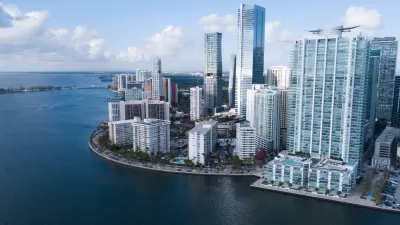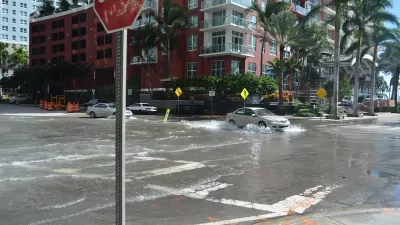Insider knowledge on one of the most controversial components of a groundbreaking plan.

Erika Morphy and Neisen Kasdin, the latter the former mayor of Miami Beach and current managing partner of Akerman LLP's Miami office, sit down for a question and answer session on the subject of the Special Area Plans in the Miami 21 plan—a groundbreaking plan adopted in 2009 as the largest form-based code to date.
"Special Area Plans (SAPs) permit new uses, such as housing and retail, on land that was previously zoned for industrial or other bygone uses," explains Morphy before commencing the Q&A. "The SAP designation sparked some of the city’s most successful developments, but has lately been the target of vigorous opposition, culminating in a January [2020] vote by the Planning, Zoning and Appeals Board to recommend its repeal."
Kasdin, who clearly supports SAPs as catalysts for large, acclaimed investments in the city of Miami, including the Miami Design District and Brickell City Centre, explains how SAPs work:
SAPs are a wonderful planning tool. They allow for the master planning of parcels greater than nine abutting acres and promote flexibility and creativity in urban design, including creating public spaces and improvements and accommodating a variety of architectural styles. They also enable unique land uses – such as large retail centers, hospitals, schools and technology districts – that can’t be accommodated under existing zoning regulations.
Kasdin and Morphy discuss the opposition from community activists that led to the repeal of SAPs in 2020, and some of the ways that SAPs can be adjusted to prevent some of the abuses that Kasdin also acknowledges in addition to the praise offered above. The city of Miami announced the formation of a task force to reform Miami 21 and Special Area Plans earlier this year.
FULL STORY: Neisen Kasdin on Miami 21’s Special Area Plans

Alabama: Trump Terminates Settlements for Black Communities Harmed By Raw Sewage
Trump deemed the landmark civil rights agreement “illegal DEI and environmental justice policy.”

Study: Maui’s Plan to Convert Vacation Rentals to Long-Term Housing Could Cause Nearly $1 Billion Economic Loss
The plan would reduce visitor accommodation by 25% resulting in 1,900 jobs lost.

Planetizen Federal Action Tracker
A weekly monitor of how Trump’s orders and actions are impacting planners and planning in America.

Baltimore Ordered to Improve Sidewalk Accessibility
The city is one of many to face lawsuits for failing to comply with the Americans with Disabilities Act.

This Toronto Suburb Has More Bus Riders Than Columbus, Ohio
Brampton, Ontario used gradual improvements in service to prove that if you build it, they will ride.

Paris Bike Boom Leads to Steep Drop in Air Pollution
The French city’s air quality has improved dramatically in the past 20 years, coinciding with a growth in cycling.
Urban Design for Planners 1: Software Tools
This six-course series explores essential urban design concepts using open source software and equips planners with the tools they need to participate fully in the urban design process.
Planning for Universal Design
Learn the tools for implementing Universal Design in planning regulations.
Smith Gee Studio
Alamo Area Metropolitan Planning Organization
City of Santa Clarita
Institute for Housing and Urban Development Studies (IHS)
City of Grandview
Harvard GSD Executive Education
Toledo-Lucas County Plan Commissions
Salt Lake City
NYU Wagner Graduate School of Public Service





























